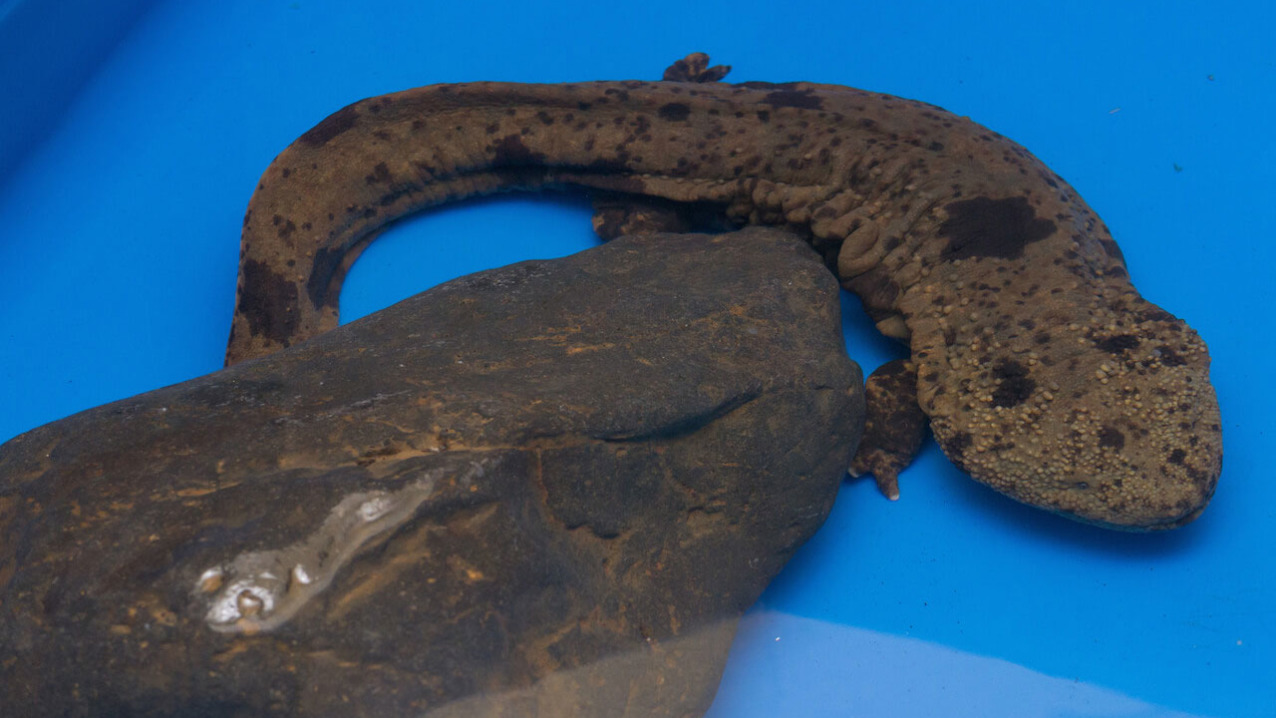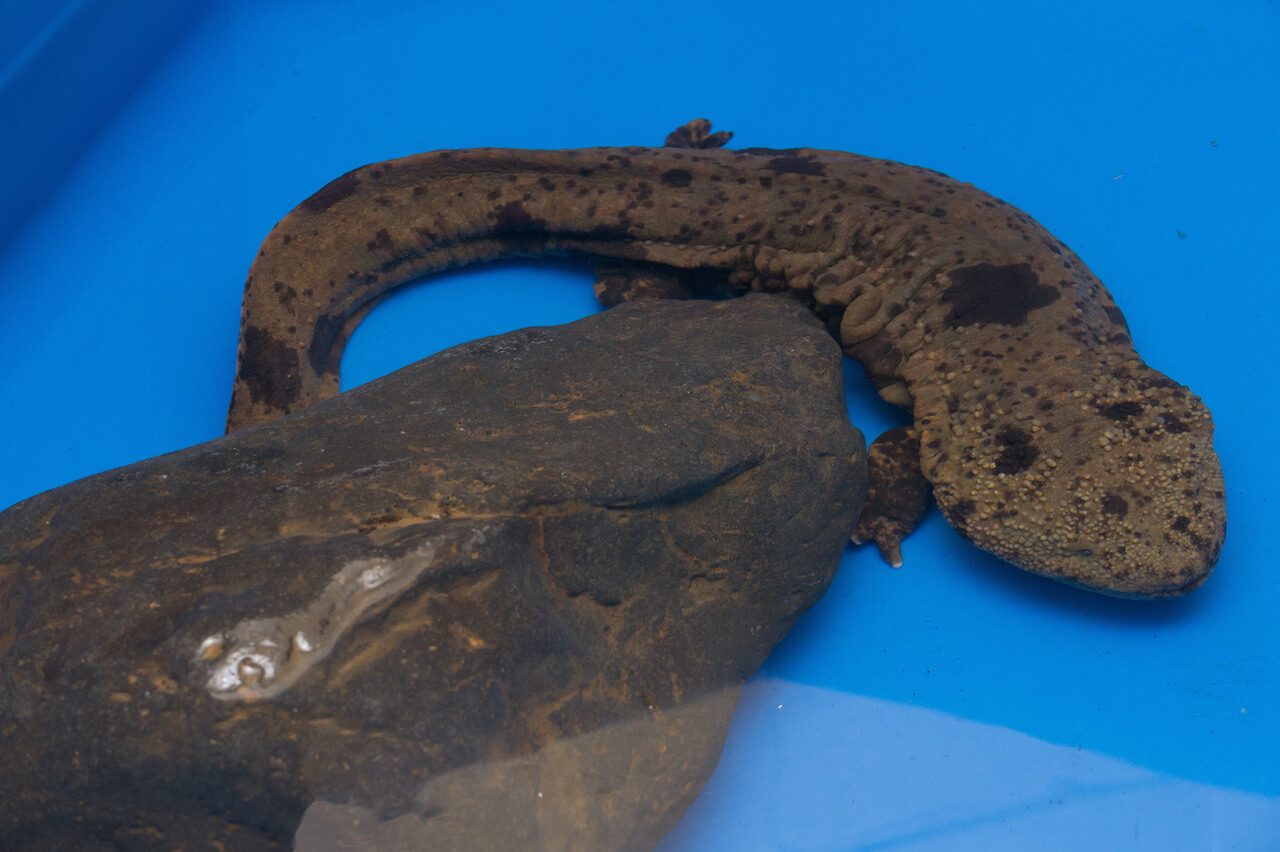Andrias japonicus
JAPANESE GIANT SALAMANDER
About Me
Scientific Name: Andrias japonicus
Description
The Japanese Giant Salamander is the second-largest amphibian in the world, reaching lengths of 1.5 meters. They are typically a mottled brown coloration with knobby and wrinkly, slick skin. Their heads are large and round, with small, almost vestigial eyes, and their legs are proportionally short compared to those of other Salamanders.
Fun Facts
Their vision is poor, so prey is located using motion-sensing electro-receptors in their face, and captured with sudden sideways movements of their heads.
The Giant Salamander is almost completely aquatic and rarely ventures out on land, except when in search of a new habitat.
Kingdom: Animalia
Phylum: Chordata
Class: Amphibia
Order: Urodela
The Japanese Giant Salamander is the second-largest amphibian in the world, reaching lengths of 1.5 meters. They are typically a mottled brown coloration with knobby and wrinkly, slick skin. Their heads are large and round, with small, almost vestigial eyes, and their legs are proportionally short compared to those of other Salamanders. Males have proportionately larger heads than females.
These salamanders are carnivorous and capable of devouring any small animal they can catch: usually invertebrates, fish, and smaller amphibians. On occasion, some large individuals have been known to take small deer.
The Giant Salamander can be found on the main Japanese islands of Honshu, Kyushu, and Shikoku. They inhabit the clean, running waters of rivers large and small, usually in forested areas, but they have been found in urban rivers, provided the other conditions are met.
These amphibians are primarily nocturnal and emerge at night to hunt. Their vision is poor, so prey is located using motion-sensing electro-receptors in their face, and captured with sudden sideways movements of their heads. Deep water is avoided by this species, and some individuals have been known to hunt by hiding behind waterfalls and striking at disoriented fish that have gone over the falls. The Giant Salamander is almost completely aquatic and rarely ventures out on land, except when in search of a new habitat. Males are territorial and compete for areas along the riverbanks that can be dug out into dens.
Although the adults can tolerate other habitats, the clean rivers are essential for breeding. Females, upon entering a male’s den, will deposit eggs. After fertilization, the female departs and the Den Master remains behind to guard the young. This is a slow-growing and long-lived species. The young only begin to reabsorb their gills at 3 years of age and maturity isn’t reached until they are 15-17 years old. The oldest captive specimen was estimated at 70 years, and some believe that they may live as long as 100 years.
The Japanese Giant Salamander is considered Near Threatened or Vulnerable by the IUCN Red List, however, there is strong sentiment in the conservation community to have it listed as Endangered. The primary threats to these animals are habitat loss and destruction by damns and urbanization. They have also been known to hybridized with Chinese Giant Salamanders that were introduced in 1973. The hybrid offspring grow much faster, larger, and more aggressive than either parent species and will readily displace pure Japanese Giant Salamanders from their habitat. The species is a protected national treasure in Japan and efforts are underway to protect remaining habitats from human exploitation. They are also bred in captivity as a precaution by the Asa Zoo.
We currently have three young giant salamanders – two females, Panda and Maru, and a male, Peace. Each giant salamander displays its own distinct personality. Maru is very outgoing, while Panda and Peace tend to be more reserved. Our giant salamanders were part of a gift exchange with Asa zoo in Hiroshima, Japan, where they have been successfully bred in captivity. Asa is our sister zoo, as Hiroshima is our sister city.
Other Amphibians
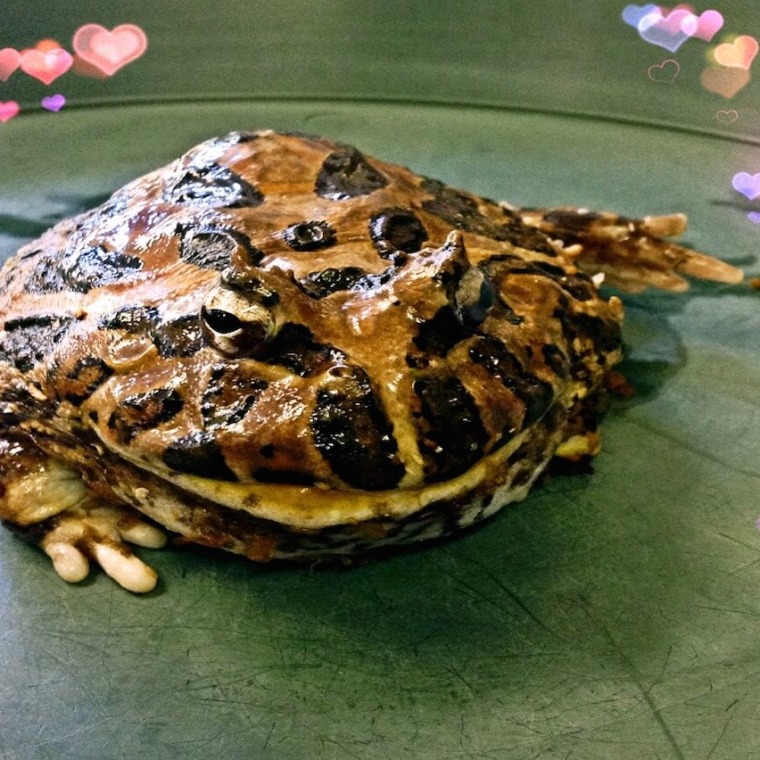
These amphibians have squat, rounded bodies with jaws as wide as their head.
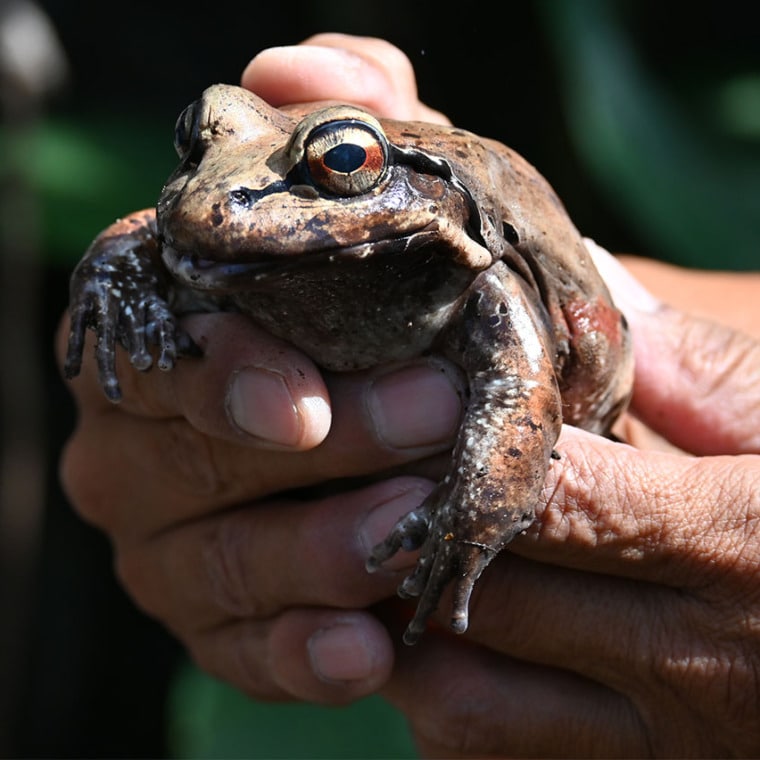
Due to their voracious nature, these frogs are solitary and males can be fiercely territorial.
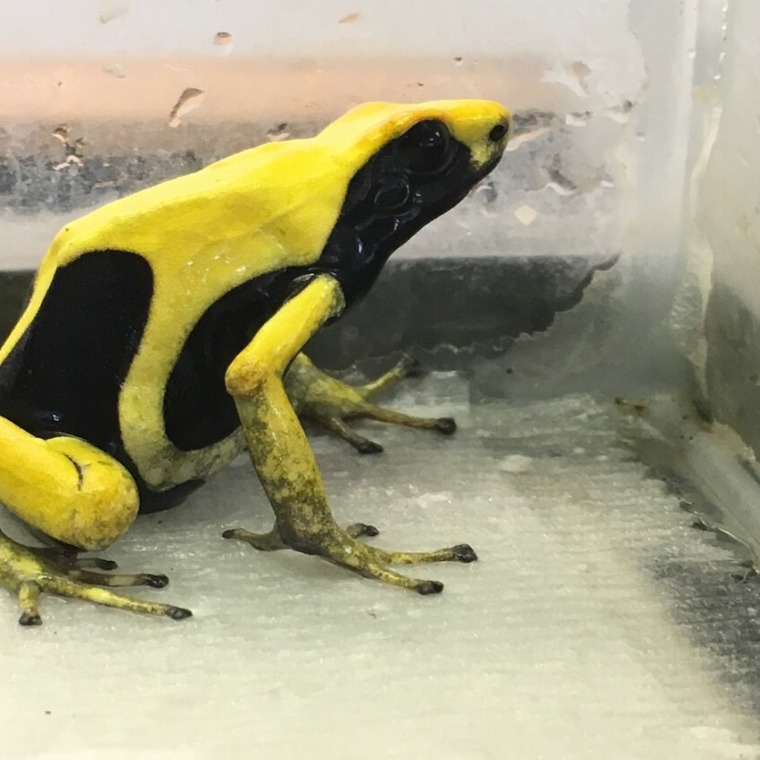
Like most Poison Dart Frogs, these animals only grow to be about two inches.
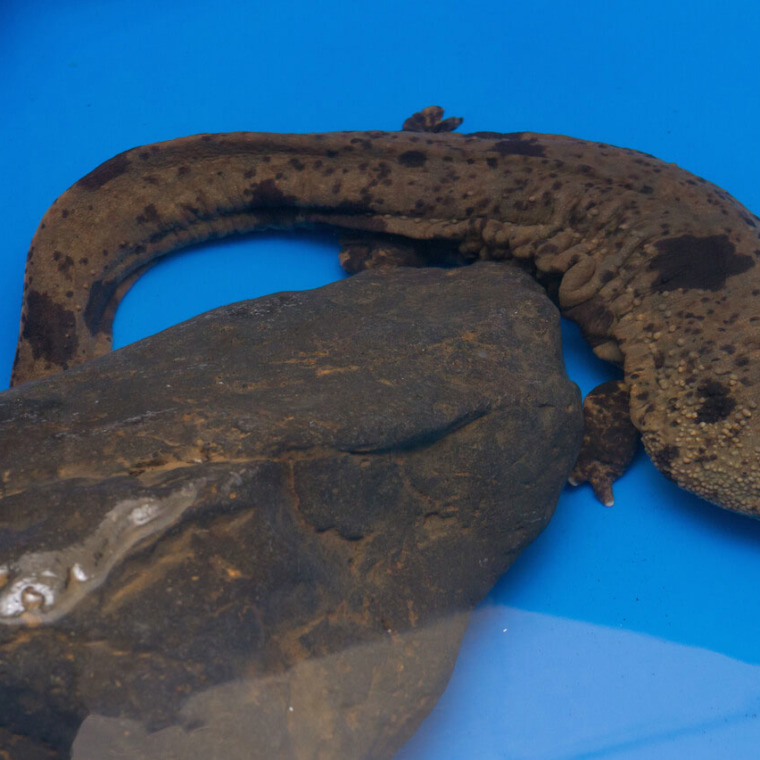
The Japanese Giant Salamander is the second-largest amphibian in the world, reaching lengths of 1.5 meters.


